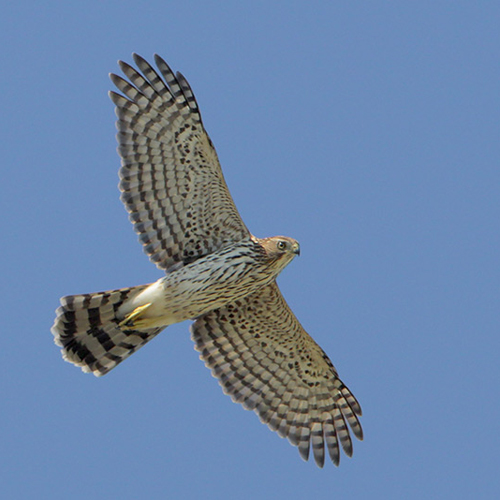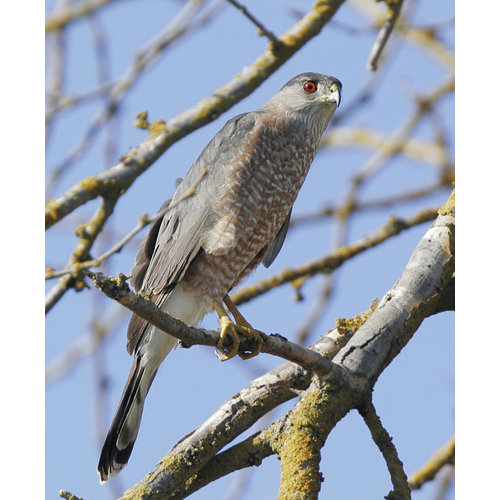General Description
The Cooper's Hawk is the most widespread of the three North American accipiters. Females are up to one third larger than males, one of the largest sexual dimorphism size differences of any hawk. Adults have solid gray upperparts, barred with reddish-brown. Their long tails are barred gray and black, rounded at the ends, with a white band at the tips. Their eyes are red. Immature birds are brown above with brown streaking on their white underparts; they have yellow eyes. Cooper's Hawks have short, rounded wings that are set slightly farther back on their bodies than those of the smaller, but similar-looking, Sharp-shinned Hawk. Their heads are relatively larger and their gray caps are darker and a little more prominent than those of the Sharp-shinned. The white tip of the tail of the Cooper's Hawk is usually wider than that of the Sharp-shinned Hawk, especially in the fall. All of these differences are quite subtle, and with the size difference between males and females, it can be difficult to distinguish a male Cooper's Hawk from a female Sharp-shinned Hawk.
Cooper's Hawks are Fairly Common in Western Washington year round.Habitat
Cooper's Hawks are generally found in forested areas up to 3,000 feet, especially near edges and rivers. Unlike the Sharp-shinned Hawk, which prefers conifers, the Cooper's Hawk prefers hardwood stands when they are available, but will use conifers too. The species prefers mature forests, but can be found in urban and suburban areas where there are tall trees for nesting. During the nesting season, Cooper's Hawks are often more common in open areas than Sharp-shinned Hawks. In winter, Sharp-shinned Hawks are seen in more open areas.
Behavior
The hunting Cooper's Hawk approaches its prey stealthily, moving quietly through dense cover until it is close enough to overcome its target with a burst of speed. The secretive traits that allow the Cooper's Hawk to surprise its prey also make it difficult to observe. It is most easily seen during migration.


No comments:
Post a Comment